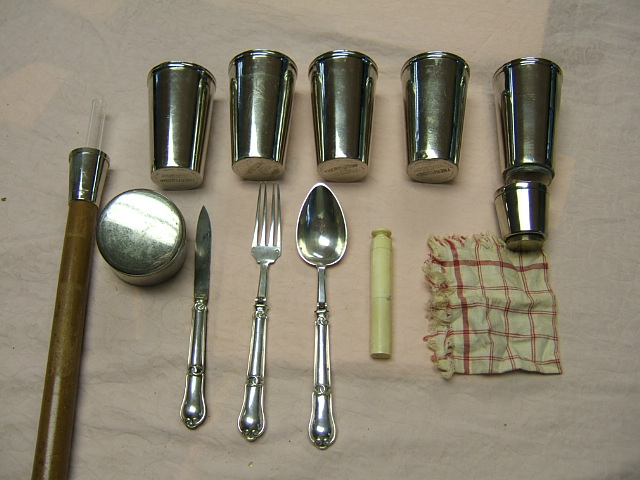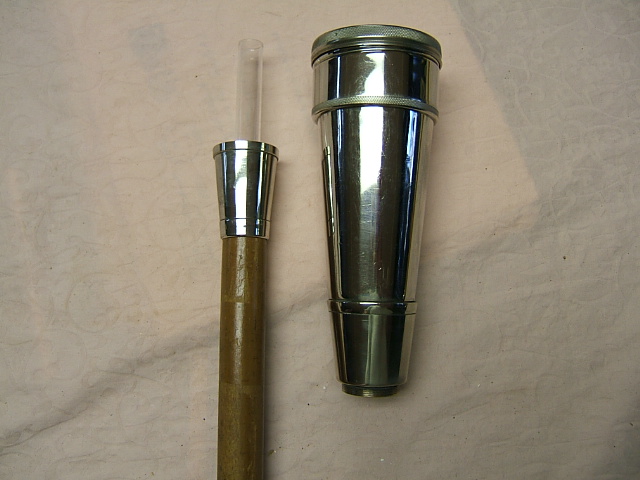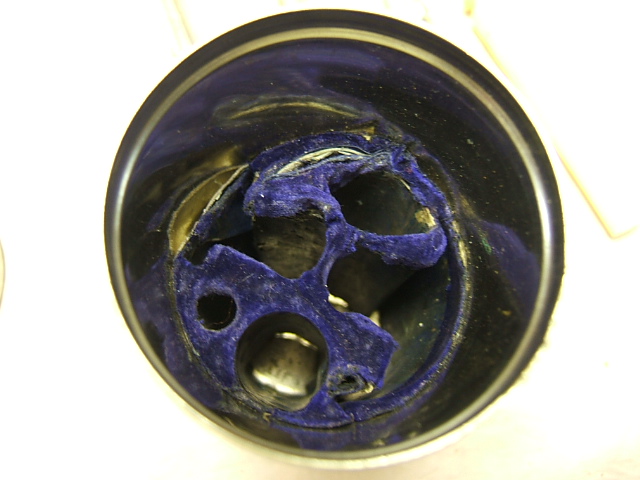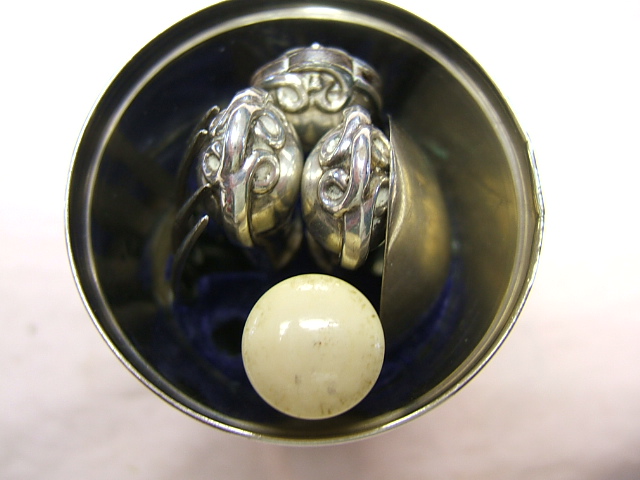 Thermos Nesting Cup Picnic Prototype (8348) Thermos Nesting Cup Picnic Prototype (8348)
The next four canes are the most interesting lessons I have to give. They came from the family of the man who made them as prototypes for the Thermos Bottle Co. of N.Y. Patient #1021716 , March 26,1912. Thermos Cup. That information is on the bottom of every cup. The were sold as multiple cups, from 1 to 4 per set. The two piece caps have different heights to take more or less cups.
The nesting cups were patented by William Herbert Cushman who was the assignor for the E.A. Fargo Co. of Taunton Ma. He applied for the patent on Oct. 10,1910 and received it 18 months later. I found that and other information by going to the United States Patent Office online. The Thermos Co. must have either bought the patent or paid a fee to use the cane as nothing about them is in the patent papers. The most important thing I learned is that the patent had nothing to do with a cane. As a general rule if an item has a patent number that isnít related to a cane itís either a fake or a handle made for another use. Lots of factors determine which is which, which I have talked about in other places.
If you go to the Archive Book also in Show and Tell, Iíve got a list of the patent dates from 1836 to 1964. Make a copy of them and take them with you when you are cane shopping. If the item is patented after 1930, itís really likely itís a fake, as it would be highly unlikely no one would ever use a handle made for another use after the period of canes.
Itís also interesting to look up your canes patent papers, as there is a lot of interesting information. It took me a while to figure out how to get their as there are lots of forks in the site. Click to go to www.uspto.gov Click Patents under the left column item #2 and a down window will reveal search the 6th item down in the left column. When the next page comes up click view full page in the center of the left column and a window will appear to put the patent # in. Press search and you are there.
Each has an exceptional change that wouldnít be easy to make today.
Todayís cane has a wood covered by velvet compartmentalized container for the accouterments that are in the etui, which means kit. The silver hollow handled folding eating set fills almost the entire handle. The other hole contains an ivory salt and pepper, the same one illustrated in more S&P you canít spill, also in this book.
The shaft with 18Ē flask is the typical commercial speckled type.
In the end, it really doesn't matter if you think these are handles made for another use, fakes, or authentic prototypes, as they arn't for sale and it's unlikely you will see another one. What matters is that you have enjoyed learning the lessons they have taught us.
Category: Gadget
Sub Category: City - Manufactured
Listed: 2006-07-29 23:16:02
|










 Online Video
Online Video









